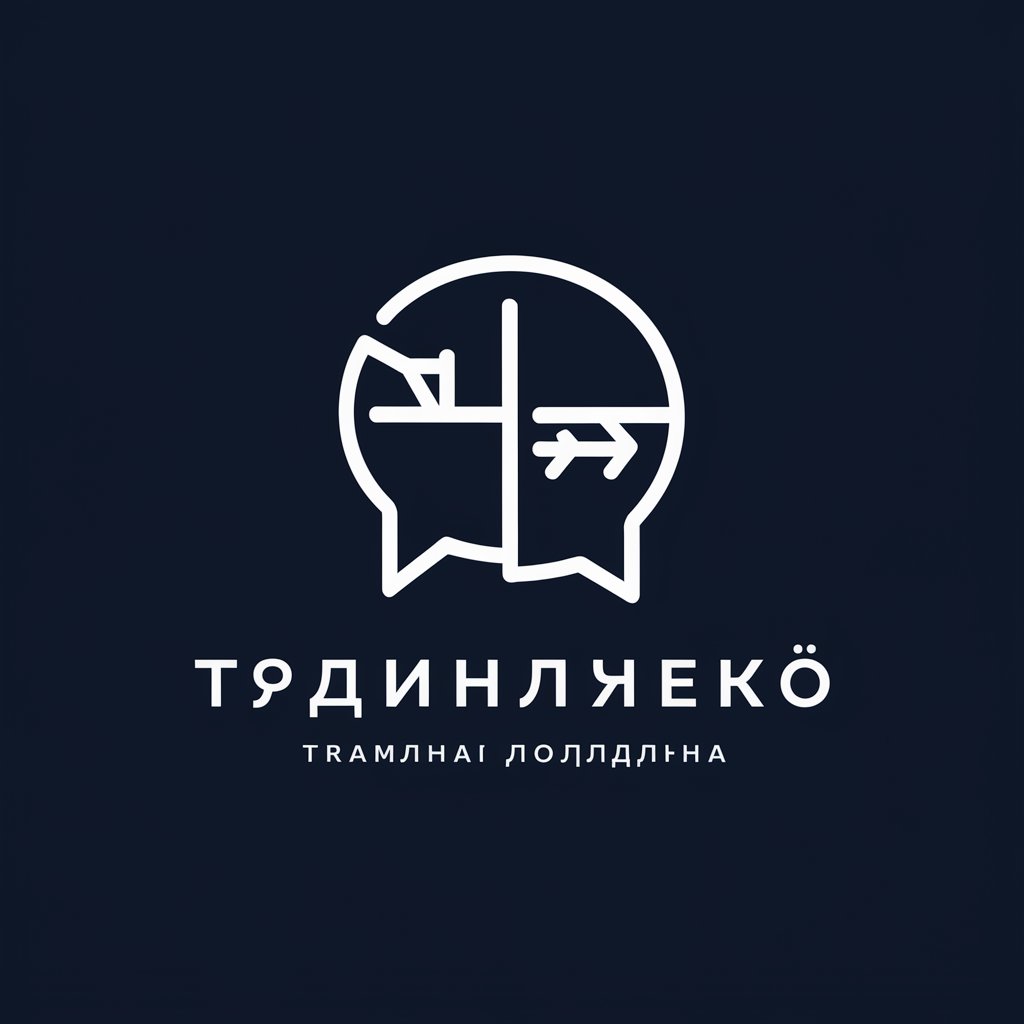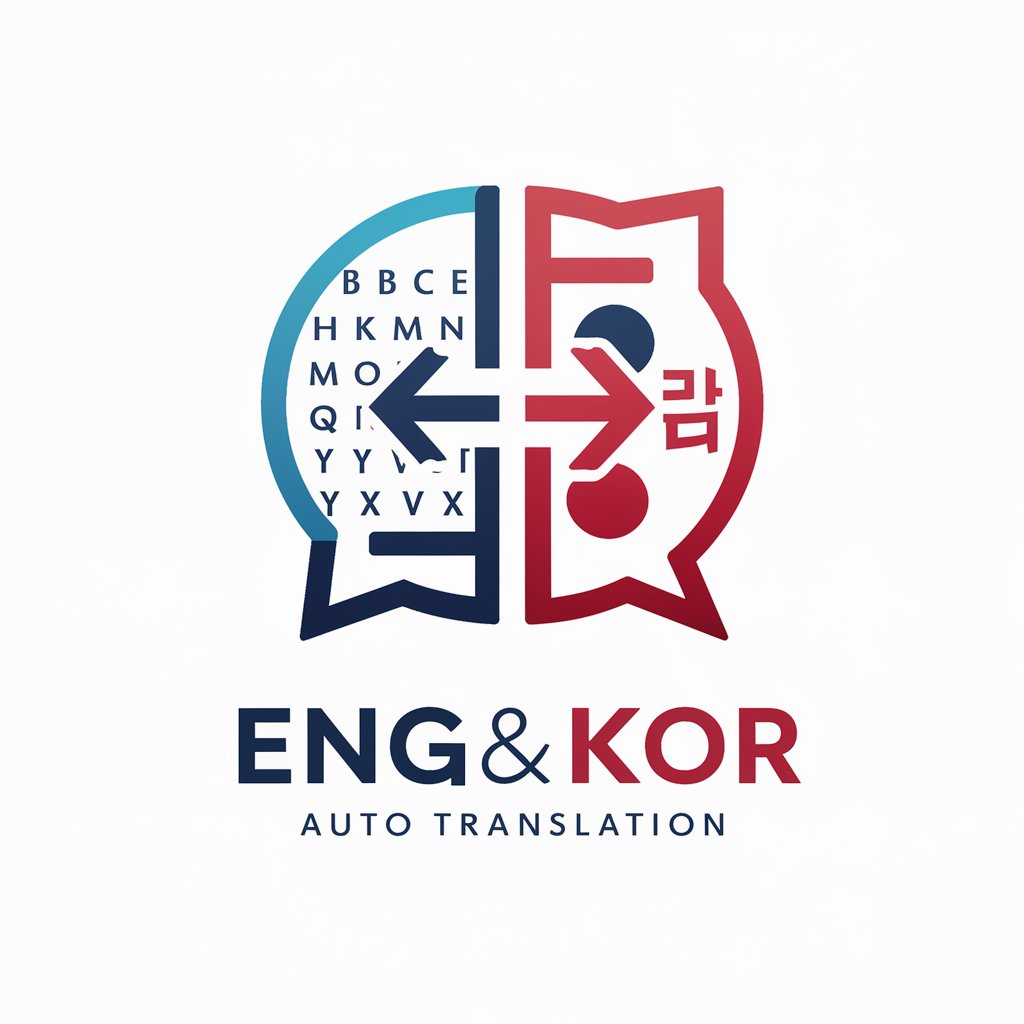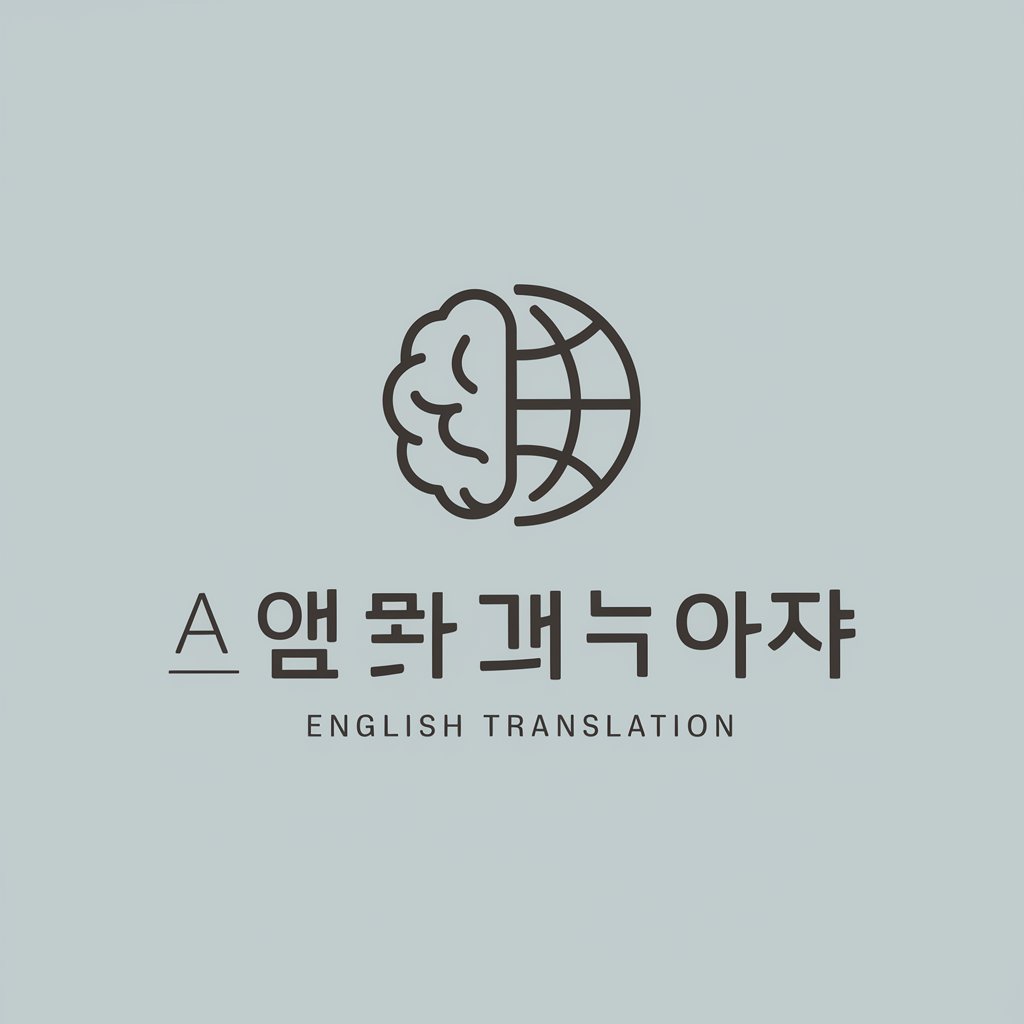
영어 한국어 번역기 - English to Korean translator

안녕하세요! 영어 번역을 도와드릴겠습니다.
AI-powered, instant English-Korean translation tool
Translate this to Korean:
Translate this to English:
Could you translate this sentence?
What is the Korean equivalent of this?
Get Embed Code
Introduction to 영어 한국어 번역기
영어 한국어 번역기 is a language translation tool specifically designed to translate between English and Korean with high accuracy and fluency. Its primary function is to facilitate seamless communication across these two languages by providing clear and contextually accurate translations. It leverages advanced language models trained on diverse data to ensure that translations are not only linguistically accurate but also contextually appropriate. This tool is particularly useful for individuals and businesses engaging in cross-cultural communication, where both linguistic accuracy and cultural understanding are critical. For example, in a business meeting between a Korean company and an English-speaking client, the translation must be precise to avoid misunderstandings, especially when dealing with complex terms or cultural nuances. Another scenario might involve translating technical manuals from English to Korean for use by engineers in Korea. Powered by ChatGPT-4o。

Main Functions of 영어 한국어 번역기
Text Translation
Example
A Korean customer support agent can translate an English inquiry into Korean and respond back in English using the tool.
Scenario
This is highly valuable in customer service environments where agents need to communicate with international clients. Accurate and fast translations help resolve issues more efficiently and maintain customer satisfaction.
Real-time Dialogue Translation
Example
During an online business meeting, a Korean manager and an English-speaking client use the translation tool to communicate instantly in their respective languages.
Scenario
In business negotiations or international team collaborations, real-time dialogue translation allows both parties to converse naturally in their own languages without waiting for external human translators.
Cultural Context Translation
Example
When translating marketing content, the tool adjusts the tone and formality to align with Korean cultural norms, such as using honorifics appropriately.
Scenario
This is particularly important for companies that want to adapt their advertising or communication strategies for a Korean market, ensuring that their messaging resonates well with local audiences.
Technical Term Translation
Example
A software company translating technical documents from English to Korean uses the tool to accurately convert industry-specific jargon.
Scenario
In fields like engineering, IT, or medicine, accurate translation of specialized terms is crucial to maintain the integrity of documents and avoid critical errors in implementation or understanding.
Ideal Users of 영어 한국어 번역기
International Businesses
Companies engaging in trade, partnerships, or operations between English-speaking and Korean-speaking markets benefit from the tool by ensuring clear communication, whether through emails, contracts, or product manuals. These businesses need accurate translations that respect both the linguistic details and cultural sensitivities.
Students and Researchers
Korean students studying in English-speaking countries or English-speaking researchers working in Korea can use the translation tool to comprehend academic texts, papers, and course materials. It helps in understanding complex concepts and terminologies in both languages.
Content Creators and Media
Media professionals, including YouTubers, bloggers, and marketers who produce content for both Korean and English-speaking audiences, use the tool to adapt their content across languages while maintaining the right tone, style, and cultural relevance.
Tourism and Hospitality Industry
Tour guides, hotel staff, and travel agents dealing with international tourists benefit from using the tool to facilitate communication with English-speaking tourists visiting Korea or Korean tourists abroad.
Government and Public Service Workers
Public sector employees involved in immigration, diplomacy, or international relations frequently use the tool for policy translation, legal documents, and public communications that require accurate and culturally sensitive translations.

How to Use 영어 한국어 번역기
1
Visit yeschat.ai for a free trial without login, also no need for ChatGPT Plus.
2
Input your text in English or Korean in the chat box, specifying whether you want a translation to Korean or English.
3
Click 'Translate' or press enter to receive your translation instantly.
4
Review the translation provided and, if necessary, request clarification or rephrasing for better accuracy.
5
Use the translation for various applications such as academic writing, business communication, or casual conversations.
Try other advanced and practical GPTs
영어 한국어 번역.
AI-driven English to Korean translations made easy

번역투 없는 번역가
Bridging Languages Naturally with AI

文賢
Elevate Your Writing with AI

王维GPT
Revive ancient wisdom with AI
UIUX 디자인 프로세스 단축키
Revolutionizing UI/UX Design with AI

송유진 변호사 - IT 및 개인정보
Empowering Privacy and IT Law

아이네 - 이세계 아이돌
Engage with Your AI-powered Idol

투자왕 - 주식 투자 조언 (워렌 버핏 매매 기법 적용)
AI-Powered Warren Buffett Investment Strategies

愛のタロットリーダー
Guiding Your Heart with AI

Time Traveler
Bringing history to life with AI

TimeFrame
Transform images with AI-powered history

Book Buddy
Revolutionizing reading with AI

Q&A About 영어 한국어 번역기
How does 영어 한국어 번역기 ensure translation accuracy?
It uses AI-powered language models trained on vast datasets to provide contextually accurate and grammatically correct translations between English and Korean.
Can I translate specialized terms like legal or technical jargon?
Yes, 영어 한국어 번역기 is equipped to handle technical vocabulary, but for very specific terms, it may still require context for the most precise translation.
Is it necessary to create an account or subscribe to use the service?
No, there is no need to create an account or subscribe. You can access the service freely on yeschat.ai without logging in.
Can I use the tool to translate large blocks of text or documents?
While the tool is optimized for both short and longer text inputs, there might be input length limitations per session. You can translate larger texts in parts for better accuracy.
Are there any tips to improve translation accuracy?
To ensure optimal accuracy, provide clear context when translating. Avoid using overly ambiguous or idiomatic expressions that may not easily translate across languages.



